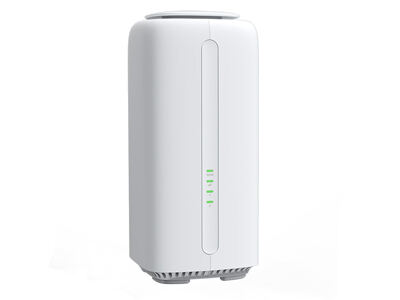No existeix una cosa com la caiguda de la xarxa en un entorn industrial altament automatitzat. Atès que les línies de producció automatitzades utilitzen un sistema de monitoratge en temps real, fins i tot una breu manca de connexió pot provocar interrupcions costoses, amenaces per a la seguretat i fallades de tot el treball. Amb l'adopció del model d'Indústria 4.0 per part de les indústries, la necessitat de mantenir-se connectat en tot moment mai ha estat tan elevada. Aquí és on entren en joc les solucions de conmutació automàtica 5G desenvolupades: proporcionen un sistema de seguretat sòlid per garantir que les operacions essencials continuïn sense problemes.
La necessitat crítica de redundància de xarxa en entorns industrials
Les fàbriques i instal·lacions industrials actuals depenen del flux de dades. Pot ser línies d'assemblatge robòtiques, sensors de control de qualitat, gestió d'equipament remot o qualsevol altra cosa, però tots aquests components depenen de comunicacions estables i immediates. Una sola caiguda de xarxa pot amenaçar línies de producció senceres amb costos elevats i pèrdues. Les xarxes amb fil, per molt fiables que siguin, poden patir danys físics i ser afectades per fallades d'infraestructura. Per tant, les solucions de reserva sense fil han estat crucials en el disseny actual de xarxes industrials.
Com funciona la tecnologia de commutació automàtica 5G
Els sistemes de failover amb 5g suport s'haurien de configurar per identificar una interrupció de la xarxa principal en segons i passar automàticament a una connexió secundària 5G sense intervenció humana. Es tracta d'una transició transparent, amb baixa latència, i les aplicacions en temps real com el control de màquines, la vigilància per vídeo i l'adquisició de dades no requereixen cap canvi. Aquestes solucions adopten algorismes d'encaminament intel·ligent per mesurar en temps real la qualitat de les connexions i així oferir una experiència d'usuari continuada evitant talls encara durant fallades de xarxa.
Implementacions en el Món Real a la Manufactura
Algunes de les plantes de producció ja han implementat amb èxit el sistema de seguretat 5G. Per exemple, una sola instal·lació automotriu automatitzada ha introduït una solució de connectivitat de doble camí basada en 5G per servir com a còpia de seguretat de la seva xarxa principal de fibra òptica. El sistema de còpia de seguretat es va activar en qüestió de mil·lisegons quan la seva xarxa principal va tenir una caiguda inesperada. Les línies de producció no es van aturar, estalviant a l'empresa centenars d'hores d'inactivitat i pèrdues de sis xifres.
Un altre exemple és una planta d'elaboració d'aliments que ha instal·lat sensors remots IoT de temperatura i humitat. La còpia de seguretat 5G va garantir que, fins i tot quan la connectivitat local es va veure interrompuda, la instal·lació pogués continuar vigilant l'entorn i registrant dades, assegurant així que els productes eren segurs i no violaven cap normativa del sector.
Millors pràctiques per construir xarxes industrials resilients
Per tal de ser realment resilients a la xarxa, s'espera que les empreses adoptin un enfocament multifocal. El primer pas hauria de ser una avaluació de riscos on s'haurien d'identificar els actius crítics i els punts únics de fallada. Cal millorar selectivament les rutes de comunicació redundants basant-se en l'aplicació de diferents tecnologies, com ara Ethernet amb connexions sense fil 5G. També s'haurien d'implementar sistemes avançats de gestió de xarxes que permetin una visibilitat i un control en temps real de tots els dispositius i enllaços connectats. Finalment, haurien de dur a terme proves i verificacions periòdiques dels procediments de transferència d'emergència per assegurar-se que els sistemes de reserva funcionin correctament quan es produeixi una fallada real.

